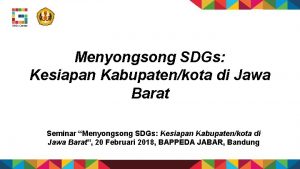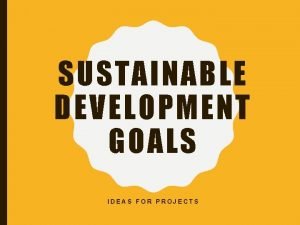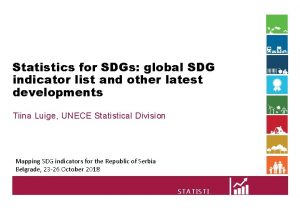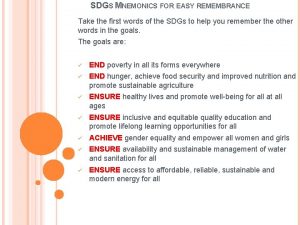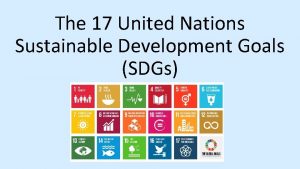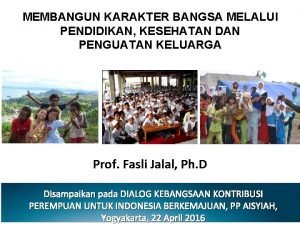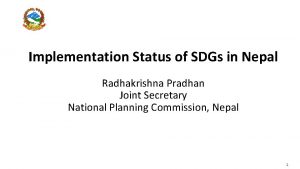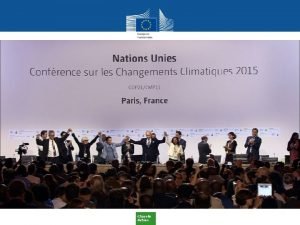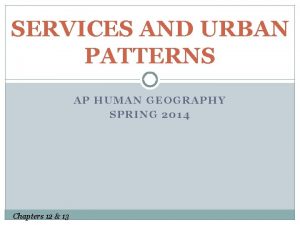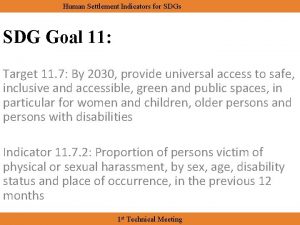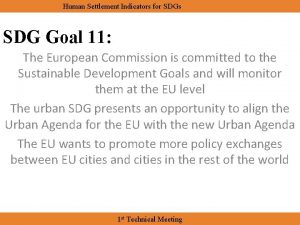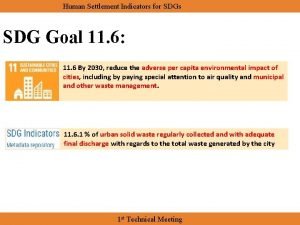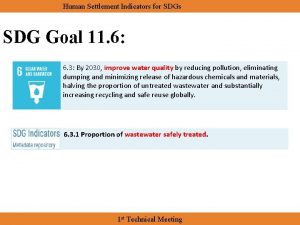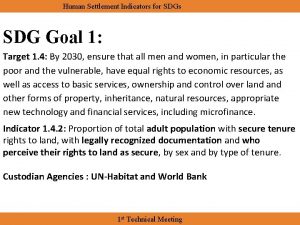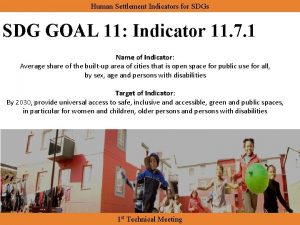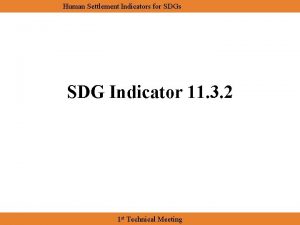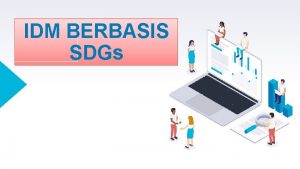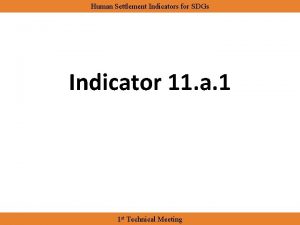Human Settlement Indicators for SDGs SDG Goal 11










- Slides: 10

Human Settlement Indicators for SDGs SDG Goal 11: Indicator 11. 6. 2 Annual mean levels of fine particulate matter (PM 2. 5) in urban areas (population weighted) By 2030, reduce the adverse per capita environmental impact of cities, including by paying special attention to air quality, municipal and other waste management. 1 st Technical Meeting

Human Settlement Indicators for SDGs Status of the Indicator: Tier 1 Yearly update, consultation with countries 1 st Technical Meeting

Human Settlement Indicators for SDGs Ongoing Work in WHO: • WHO Urban air quality database : regularly updated with annual mean ground measurements of PM 2. 5 and PM 10. Currently data for 3000 towns and cities. • Indicator modelling with additional data sources (e. g. remote satellite sensing, chemical transport models). Current resolution at 10 km. • Results given for urban and rural areas at country level. Monitoring data is used for calibration. • Urban Health Initiative - to reduce AP and prevent related diseases • Communication strategy - Breathe Life Campaign with CCAC 1 st Technical Meeting

Human Settlement Indicators for SDGs Planned Work: • Additional pollutants to be included in the database(e. g. NOx, Ozone); • Further development of modelling, increased resolution, provision of trends; • Collaboration with WMO for the modelling, including new data sources and forecasting capabilities; • Creation of the Global Urban Air Pollution Observatory (GUAPO), resource platform created by and for cities on air pollution and health, with data, policies in place and their evaluation, case studies /success stories, etc. 1 st Technical Meeting

Human Settlement Indicators for SDGs Definitions (Global): • The indicator 11. 6. 2 provides the urban annual mean concentration of PM 2. 5 to which the urban population is exposed. • The WHO Air Quality Guidelines (AQG) recommend an annual mean value of 10 mg/m 3 for PM 2. 5 • In 2014, 92% of the world population was exposed to levels of PM 2. 5 above the WHO AQG. 1 st Technical Meeting

Human Settlement Indicators for SDGs Methodology: • Except Europe, North America and some high income Asian/Oceania cities, few countries have an established air quality monitoring network. • To fill this gap, the indicator is estimated using a hierarchical modelling approach, that uses information from other sources, such as estimates from satellite retrievals of aerosol optical depth and chemical transport models. It allows spatiallyvarying relationships between ground measurements and other factors that estimate air quality. 1 st Technical Meeting

Human Settlement Indicators for SDGs Challenges experienced : • Ground measurements are crucial for calibrating the model, and therefore efforts should be made to encourage and support countries to build air quality monitoring network • Non-anthropogenic sources of particulate matter, especially in countries experiencing episodes of sand desert dust, issues with further policy actions 1 st Technical Meeting

Human Settlement Indicators for SDGs Opportunities to be explored: • Collaboration with WMO for modelling particulate matter exposure • Collaboration with UNEP on capacity building at country level for air quality monitoring • Collaboration with UN Habitat to map changes in public policies (and link with AP & health), building on city case studies 1 st Technical Meeting

Household air pollution: The common problem for health, indoors and outdoors • About 12% of global ambient air pollution Pollution comes. Outdoor from cooking Air mainly with solid fuels. • This high percentage fails to account for the pollution caused by supplementary cooking fuels, nor the polluting fuels and technologies used for heating and lighting • In 2012, about 500, 000 of the 3. 9 million deaths to ambient air pollution, were caused by the household air pollution “leaking” outdoors. Unger, 2010 • Household biomass use is one of the largest sources of black carbon emissions globally, estimatee to cause about 25% of global black carbon emsisions

Human Settlement Indicators for SDGs Best way forward: • Encourage capacity building for air quality monitoring • Source apportionment studies • Institutional capacity of the health sector 1 st Technical Meeting
